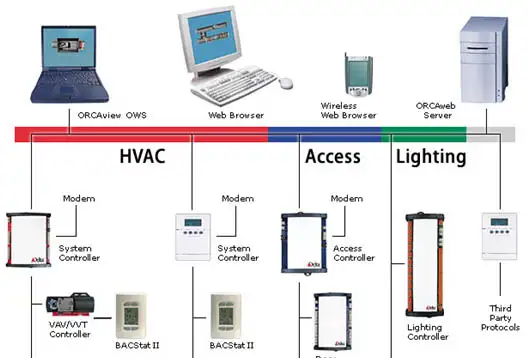Building Energy Management Systems

Building energy management systems (BEMS) are crucial tools for optimizing energy use in industrial, commercial, and institutional power systems. By incorporating advanced technology, such as IoT, and integrating various building systems, BEMS can lead to significant energy and cost savings, improved building performance, and progress toward sustainability goals. By understanding and implementing best practices, organizations can maximize the benefits of BEMS and contribute to a more energy-efficient and environmentally-friendly future. The focus of building management systems is the long term electrical consumption in commercial buildings.
A building energy management system is a comprehensive solution that combines advanced hardware and software components to monitor, control, and optimize energy consumption in a facility. These systems provide valuable insights into energy use patterns, identify inefficiencies, and enable facility managers to make informed decisions to reduce energy consumption.
The key components of a BEMS include sensors, controllers, and actuators that work together to collect data on energy consumption, temperature, humidity, and occupancy levels. This information is then processed by the system's software, which uses algorithms and analytics to optimize the operation of HVAC, lighting, and other building systems. Internet of Things (IoT) technology contributes significantly to BEMS by facilitating seamless communication between devices and providing real-time data for better decision-making.
Building energy management systems improve energy efficiency by identifying inefficiencies in various systems and suggesting adjustments to optimize performance. By monitoring and controlling energy consumption, a BEMS can help facility managers detect and resolve issues, such as equipment malfunctions, poor insulation, or inefficient lighting, thereby reducing overall energy consumption. This leads to significant cost savings and a reduced carbon footprint.
To implement a successful building energy management strategy, organizations should consider the following best practices:
- Conduct a comprehensive energy audit to identify inefficiencies and prioritize improvements.
- Set realistic energy-saving targets based on benchmarking data and industry standards.
- Implement a monitoring and measurement plan to track energy performance and validate savings.
- Engage staff and occupants in energy-saving initiatives through training, awareness programs, and incentives.
- Continuously evaluate and update the BEMS as new technologies emerge and building requirements change.
Integrating HVAC and lighting control in a BEMS has numerous benefits. By automating and synchronizing these systems, facility managers can ensure that energy is only used when and where it's needed, further reducing energy consumption. For instance, a BEMS can automatically adjust HVAC settings based on occupancy levels and outdoor conditions, while a connected lighting system can dim or turn off lights in unoccupied areas. This integration results in significant energy savings and improved occupant comfort.
Achieving sustainability goals is more attainable with the help of BEMS. By reducing energy consumption and lowering greenhouse gas emissions, these systems contribute to the global effort to combat climate change. Furthermore, BEMS can help organizations meet regulatory requirements and certification standards, such as LEED and ENERGY STAR, making them more attractive to environmentally-conscious clients and investors.
Demand response strategies are an essential aspect of building energy management systems. These strategies involve adjusting energy consumption in response to fluctuations in energy supply and demand or price signals from utility providers. By participating in demand response programs, organizations can earn financial incentives and contribute to grid stability during peak demand periods. BEMS can automate these adjustments, ensuring that facilities respond effectively to demand response events without compromising occupant comfort or building operations.
On-Site Training
Interested in cost effective, professional on-site electrical training?
We can present an Electrical Training Course to your electrical engineering and maintenance staff, on your premises, tailored to your specific equipment and requirements. Click on the link below to request a Free quotation.
EF PARTNER MEDIA
Product Showcases
Shared Media
















